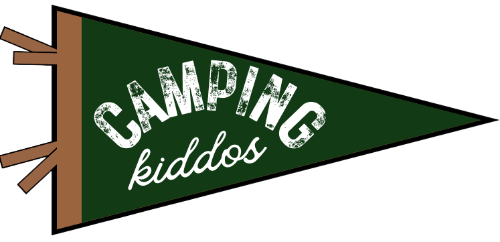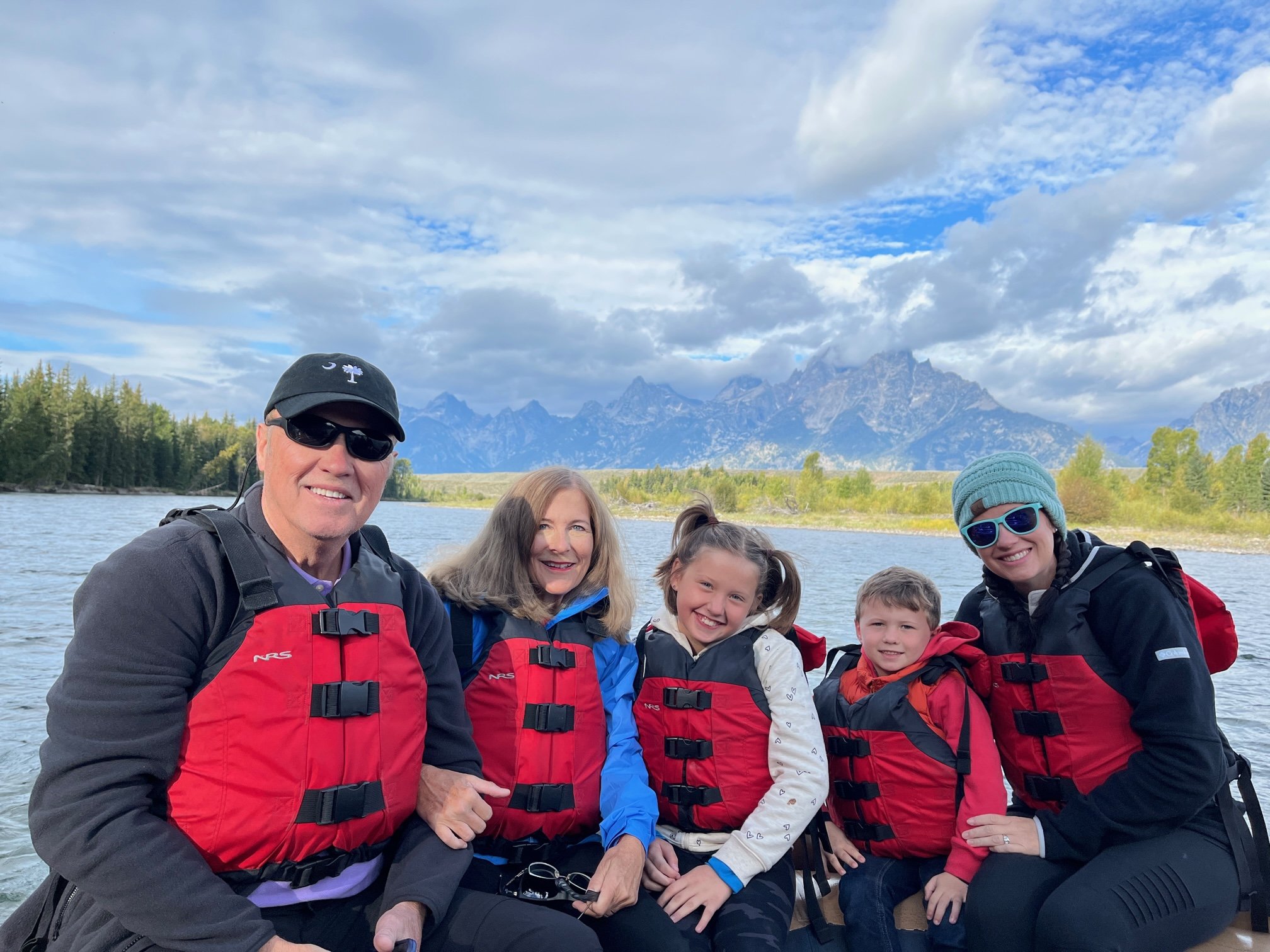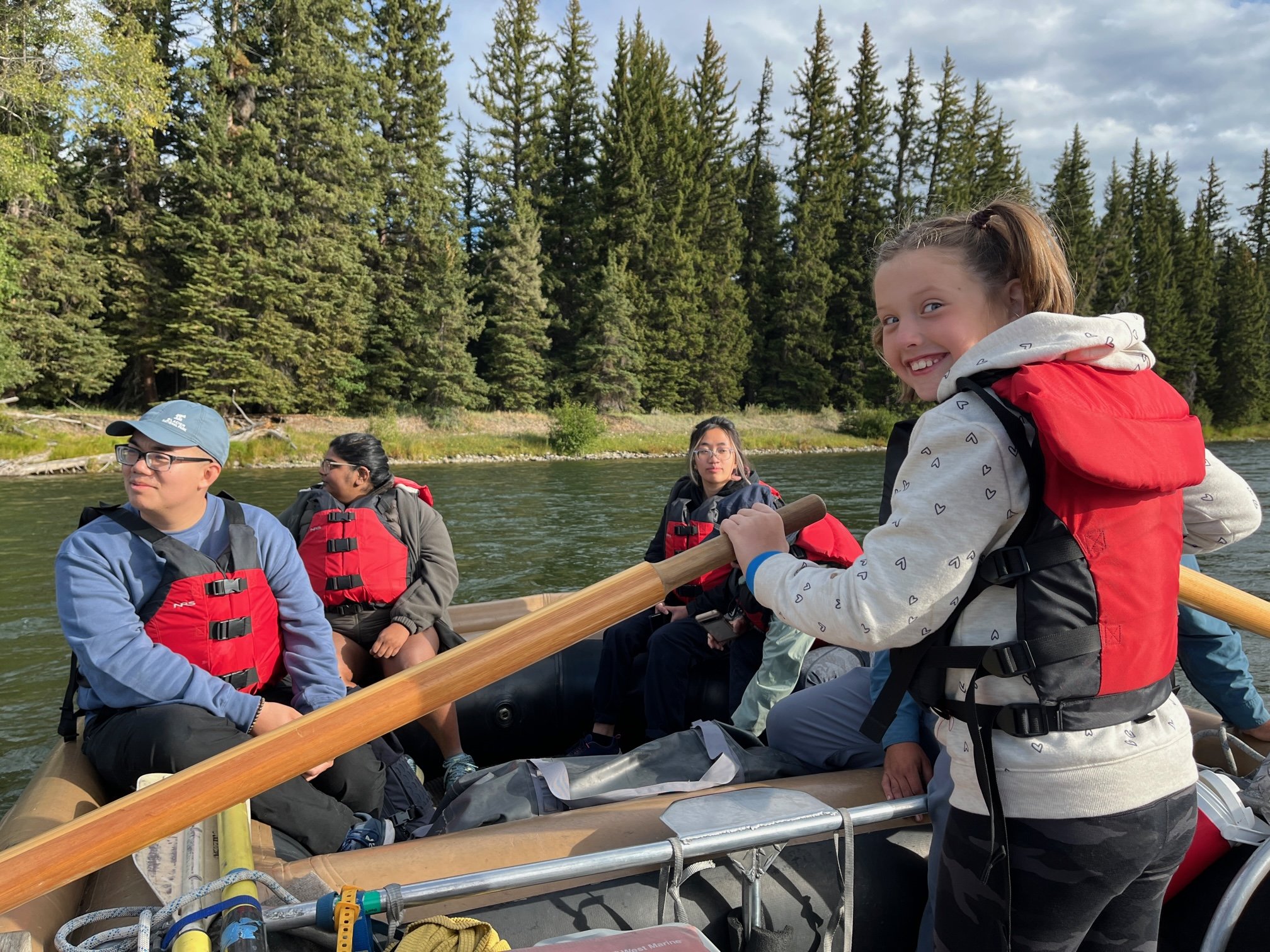Best Grand Teton Float Trip: Review and Tips
See Grand Teton National Park on a float trip for an incredible, new perspective!
Adding a half-day guided float trip is an excellent way to experience another side of this Wyoming park, while getting up close to some of the area’s wildlife.
This adventure is gentle enough for even younger kids to enjoy, while the stunning scenery and guide commentary will keep everyone intrigued.
During our visit to Grand Teton National Park, my family spent about 4 hours on an excellent river float excursion, and it ended up being a highlight of our time in Jackson Hole.
If you’d like to add a similar trip to your next Grand Teton visit (and you really should!), you’ll find everything you need to know below from what to wear to how to book.
My dad, mom, daughter, son, and I on one of the most picturesque section of the Snake River float
This post contains affiliates. If you purchase through the links below, I will receive a commission at no charge to you.
Grand Tetons National Park River Float FAQs
What body of water will I be floating on?
A map of the most common meeting, drop-off, and pick-up locations for the Grand Teton float trip on the Snake River
On this river tour, you’ll be exploring the Snake River, which cuts through Wyoming and Idaho on its way to the Pacific ocean.
While the specific section of the river that you’ll travel may change depending on river conditions, you’re likely to put in on the Snake River off of the Grand Teton Park Access Road just south of the Triangle X Ranch.
Your float will take you about 10 miles (depending on river conditions) to the area of the park called Moose.
The river guides will then take you by van back to your car.
The tour company that we went through is the Grand Teton Lodge Company, and they come recommended.
For a slightly longer experience on a lower section of the Snake River, Teton Scenic Floats runs a very similar river tour from Moose down 13 miles towards Jackson, Wyoming.
What kind of boat will I ride on?
It’s almost time to board the raft!
Unlike a river float like we’ve done elsewhere in the country—when floating the French Broad in Asheville, NC, for example—this river float is more akin to white water rafting than it is tubing.
The water isn’t anywhere near rough enough for white water rafting, but you’ll be on that style of large, inflatable raft.
Your raft will hold around 12 people and a guide, plus lifesaving equipment that you hopefully won’t need.
I rode on smaller but similarly shaped rafts when I’ve been whitewater rafting in North Carolina and Tennessee. These are sturdy and nearly indestructible boats, especially when they’re heading down calm waters like this section of the Snake River.
Is this tour good for kids?
My kids—ages 7 and 10—enjoyed this tour immensely. The very mild rapids at the end of the ride were just enough to give my 7 year old a thrill (and for me to hang onto the back to his life jacket tightly!).
Overall, I don’t think I’d bring kids younger than 6 or 7 on this trip as I’d be too nervous about them sitting on the side of the float. While it isn’t hard to stay balanced on the wide bench-style side of the raft, I wouldn’t want to put a baby, toddler, or preschooler in that position.
There’s just nothing they’d get out of this trip that young, and the stress of hanging on to them would prevent me from enjoying the ride.
My elementary aged kids loved the incredible views from the raft. Our experience here was a great balance to the many hikes and ranger tours we did on the ground, and I’m so glad we put this river float into our Grand Teton itinerary with kids.
Our guide was excellent with my kids, and he invited each of them to guide the raft during a slower section of the river.
My 10-year-old took him up on this offer and had the best time learning how to be a river guide.
My daughter has taken over the raft!
What should I wear to this river float?
PIN ME!
You’ll want to watch the weather carefully in the days leading up to your float as the temperatures can fluctuate wildly in Grand Teton National Park, even in the summer months.
We took our river float tour towards the end of the summer (Labor Day weekend, to be exact), and it was a brisk 45 degrees mid-day.
On a nicer day, you could get away with shorts, a t-shirt, and perhaps a light jacket.
Our river guides and a couple of the people on our tour had on Teva/Chaco style sandals, and they all mentioned that their feet were cold.
I stuck to my hiking shoes and wool socks, which are essential parts of my women’s hiking clothes capsule wardrobe.
You don’t need to get your feet wet at any point during the tour, so you don’t have to wear specific footwear.
When is this tour available?
Since winter hits hard in Wyoming and then lingers for about 8 months, you can only take a Snake River float tour from June to early October.
Even during that time, you’re likely to have snow, sleet, thunderstorms, and other intense weather.
For the most part, the tours continue on regardless of a little rain or snow. They will, however, be postponed or canceled if there is thunder, ice, or particularly heavy snow or rain.
Check the exact starting and ending dates from the tour company each year, especially if you’re planning to visit during the start or ending of the season.
Grand Teton River Float Trip Itinerary
Just one of the incredible views along the Snake River
While there are a couple of companies offering similar excursions in both the morning and afternoon, I’m going to focus on a typical half-day trip.
These half-day trips don’t include snacks or a meal, though you can bring your own water and snacks along with you.
You can book a more expensive float that includes a boxed lunch and a quick picnic on one of the islands in the river, but, honestly, that boxed lunch is going to come from the same Delaware North catering kitchen as the other restaurants in Grand Teton—and it’s going to cost significantly more.
Unless you’re super attached to the idea of a boxed lunch on an island, stick to the half day tour and grab a meal before/after.
We did the morning half-day excursion, which lasted roughly from 8 AM-noon. If you take the afternoon tour, expect the same progression of events, just from 12:00/12:30 PM to 4:00/4:30 PM, depending on the exact departure and arrival times.
Times and meeting locations change based on the season, river conditions, and guide availability, so always check the details provided in your specific booking materials.
8 AM: Arrive at meeting location
The morning of our float trip dawned sunny but cold, so we layered up and headed over to our meeting location at the Jackson Lake Lodge.
Once there, we checked in with the attendant at the activities desk.
NOTE: We’d signed all of the liability waivers the night before, so our check in was super quick the morning of. If this is offered during your visit, I’d highly recommend doing so as it means you’ll get a few extra minutes of sleep before your tour!
8:30 AM: Guides arrive
We met our 2 guides for the day at the hotel. They introduced themselves and then re-counted to make sure everyone who’d check in was indeed still hanging around.
We got a quick overview on what the day was going to be like with a final reminder to buy any snacks or drinks, and to use the restrooms one last time.
NOTE: There is one more restroom near the launch site, but it’s a cold vault toilet. You’ve been warned.
8:45 AM: Depart the meeting location
If you’re late beyond this time, you’re out of luck as the group and the guides got into our tour van to go to the actual launch site.
Since there isn’t any permanent commercial property directly on the river, the river tour companies have to haul in their rafts for every tour.
Since the typical put-in location is down a gravel road with a serious grade, the companies have the visitors meet them at an easier to find location (hence, the hotel lobby).
From Jackson Lake Lodge to the riverside location took us about 30 minutes.
Note that you will be in a 12 passenger van with little personal space. Get to know your fellow rafters as this is the same group you’ll stay with all day.
9:15 AM: Arrive at the Snake River ramp.
The Camping Kiddos are ready to head out on the water.
Here, you’ll get a short safety briefing before you’re fitted with life jackets.
They did have adult and children’s sizes available. Since the life jackets are highly adjustable, both my 10- and 7-year-old kids were able to get a snug fit.
(As a former lifeguard, I don’t mess around with bodies of water and kids. Always use a life jacket in these situations!)
We also had the chance to use those wonderful vault toilets that I mentioned earlier. Better safe than sorry as this is the last opportunity you’ll have until you get to the other end of the river tour!
While the passengers were adjusting life jackets and using the restrooms, the guides were busy putting the raft into the river and preparing for the tour.
9:25 AM: Board the raft.
While one of the guides holds the raft steady, the other helps each guest into the raft.
These rafts are pretty big—we had 10 people on our tour with a couple of empty spots, and it felt spacious.
That being said, the raft has some bounce to it that takes some getting used to.
In the first five minutes of boarding, I was convinced that one or both of my kids was going to bounce right off the side.
However, by the time we got underway, I saw that 1) the guide was quite adept at rafting, and 2) the river wasn’t anywhere near rough enough to throw anyone.
Perhaps I’m overly worried as I was once thrown into freezing water while going over a Class 4 rapids in North Carolina. SO COLD.
In any case, the guides will get you onto the raft and help you stow your bags.
9:30 AM: And we’re off!
Once boarding is complete, our younger, less experienced guide drug us further into the Snake River and gave us a push. He then headed back to the van to warm up and meet us on the other end of the river float.
Our senior guide, Trevor, settled in and quickly situated our raft into the middle of the river.
My daughter in her seat on the raft
He chatted a bit about himself, had us all introduce ourselves, and then explained a few of the things we’d see along the way.
Trevor encouraged us to ask questions to help him focus his spiel for the group’s interests. He had plenty of fun tidbits that he talked about unprompted.
However, through the questions of the group, he clearly knew a wide range of information on the park’s history, wildlife, weather, river, and more.
We spotted multiple bald eagles on the trip, one of which was fighting an osprey over a fish.
We didn’t see any larger wildlife, but that’s a game of chance—you might see grizzly bears, moose, elk, and deer on any given day.
On a calmer section of the Snake River, Trevor made sure that he took pictures of each family/group on the tour. We ended up getting the only photo of all 5 of my family members on the trip this way!
By the time we arrived in Moose at the end of the tour, we’d traveled a little over 7 miles throughout the heart of Grand Teton National Park.
11:15 AM: Reboard the van.
Once we arrived at Moose, we waited for a few minutes in the parking lot while the guides loaded the boat onto the trailer.
The weather was still pretty chilly despite the fact that it was early September. Trevor, our guide, had mentioned that they’d had snow in June earlier that season, so you never know what to expect from the Wyoming weather.
Thankfully, the van was already toasty when we climbed back in.
The group was much more chatty on the ride back since we’d had the chance to get to know one another throughout the morning.
11:45 AM: Return to starting location.
The guides will return you to your starting location at the Jackson Lake Lodge, where you can eat lunch or return to your car.
If you’re staying here for lunch, I highly recommend the vintage-themed Pioneer Grill on the second floor. They had incredible burgers, buffalo chicken loaded fries, chicken fingers, and brownies. It’s one of the best places to eat in Grand Teton National Park!
The second floor of the Jackson Lake Lodge also has a couple of shops. There’s an outdoor shop with jackets, backpacks, socks, etc.; a gift shop with cute pajamas, t-shirts, stickers, and mugs; and a general store with home goods, chips, and soft drinks.
Review of the Grand Teton Snake River Rafting Tour
We had an excellent time on our Grand Teton river float. Everything ran right on time, the guides were knowledgeable, and the weather was perfect.
To maximize your experience, I highly recommend getting to know your guides a bit. The men and women who are drawn to this line of work are never boring people, and it’s fascinating to hear about the places they’ve guided and what they’ve got coming up in the off season.
For example, our guide, Trevor, has been guiding for a decade overall and for 4 years on the Snake River. At the end of the season, he was planning to do a 10-day rafting trip down the Colorado through the Grand Canyon with 24 other river guides!
The guides also know so much about the area and are happy to give you restaurant, activity, and hiking recommendations.
You’ll also want to arrive at your selected meet-up point—and do so early. The guides are on a strict time schedule and can’t wait for anyone who’s straggling.
In fact, they only have about 45 minutes between their morning and afternoon floats, which barely gives them enough time to tell one group goodbye before they have to check in their second group of the day.
My son contemplates one of his many boat snacks.
Do everyone a favor and plan to get to the meeting point at least 20 minutes before your set arrival time. This also gives you time to grab food and use the restroom.
You’ll want to take food and drinks on the float since you’ll be on the river for at least 2 hours. If you’re my children, you’re starving after an hour without snacks, so pack whatever will keep you and your family happy for the duration.
We packed chips, fruit, and water bottles, but my 7 year old would’ve happily eaten a sandwich if I’d packed it. Err on the side of caution and pack more than you think you’ll need.
Just remember that you’re not able to bring any alcoholic beverages on these types of floats.
The Snake river from the northern end of Grand Teton National Park to just above Jackson, Wyoming, is relatively calm. You’ll mostly be floating on barely moving water, but you will encounter a section or two of Class 2 rapids.
You can’t take a bad picture on this tour!
This might sound scary, but Class 2 is pretty mild. You’ve probably been over bumpier water if you’ve done a river rapids ride at a theme park. It’s definitely more fun than terrifying.
When you’re on the water, keep an eye out for places where you can see the changing river environment. The Snake River is still carving out this part of Wyoming, and pretty dramatically in many areas.
You might see places where the entire river bed has shifted by 50 or 75 feet, where trees on the banks have been uprooted, or where new islands have been created from displacement of the river bed.
Seeing the national park from one of its most powerful elements is unforgettable. You’ll get some incredible pictures, but you’ll also come away from this river float with a new appreciation for the beauty of this park.












